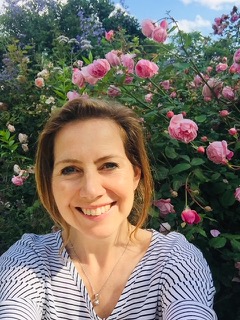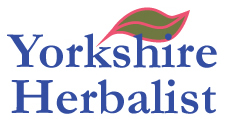Chamomile, German

Synonyms: Matricaria recutita L., M. chamomilla L., Scented Mayweed
Description: “Sweetly-scented annual with much-branched stems and finely divided leaves. Daisy-like flowers are produced from early summer to autumn. H 15-60cm, S 10-38cm. Fully hardy.” (Bown, 1995: 156)
Habitat: Native to Europe, NW Asia; naturalised in N America and extensively cultivated.
Harvest: “Flowers are collected when first fully opened.” (Bown, 1995: 309)
Part used: Flowers.
Dosage: 1:5 Tincture: 1-4ml tds, Fluid Extract: 1-3ml tds, Dried: 2-8g tds. (AD)
Character: Bitter, mainly warm, moist (Ody, 1993).
Actions:
-STIMULATING NERVINE,
-CARMINATIVE,
-ANTISPASMODIC (Priest and Priest, 1983),
-mild sedative,
-ANTI-INFLAMMATORY,
-anti-ulcer,
-anti-microbial,
-vulnerary,
-diaphoretic (Mills and Bone, 2000)
Organ systems: Nervous; Digestive (gastrointestinal tract).
Indications: “for conditions of neural irritability with sthenic [strong, active] background.” (Priest and Priest, 1983: 80)
-Acute, non-complicated diarrhoea (with pectin)*, nervous diarrhoea, flatulent and nervous dyspepsia, flatulence, colic, abdominal spasms, travel sickness.
-Premenstrual irritability, spasmodic dysmenorrhoea, amenorrhoea.
-Infantile convulsions from colic*, teething, earache, etc.
-Restlessness and anxiety, mild sleep disorders.**
-Acute or chronic inflammation; spasm or ulceration of the gastrointestinal tract.**
External usage: Eczema; wound healing.*
-Cosmetics, bath and hair care products for sensitive skin, inflammation, acne.
Safety: Very safe, but…
Contra-indications: be cautious with hayfever sufferers and do not apply topical preparations to persons with known sensitivity to any members of daisy family (due to risk of contact dermatitis).
Key Constituents (Mills and Bone, 2000):
-Essential oil (0.5-1.5%), containing (-)-alpha-bisabolol (levomenol), chamazulene (formed from matricine during steam distillation), bisabolol oxides A, B and C; cis- and trans-en-yn-dicycloethers.
-Flavonoids (0.5-3%), particularly apigenin 7-glucoside, flavonoid aglycones, coumarins, phenolic acids, mucilage, GABA.
Pharmacology (Mills and Bone, 2000): Experiments in vitro and using rats have demonstrated anti-inflammatory, anti-spasmodic, sedative and CNS, anti-ulcer and anti-microbial activity. Diets containing chamomile flower, several chamomile oils and guaiazulene stimulated liver regeneration in rats. Experiments also shown wound-healing activity of chamomile to be closely linked to its anti- inflammatory activity.
Clinical trials (Mills and Bone, 2000): Topical applications have shown benefit in treatment of dermatitis, eczema and varicose eczema; also wound-healing after dermabrasion of tattoos; preferable to almond cream for erythema and moist desquamation following radiotherapy; also varicose ulcers.
Toxicology (Mills and Bone, 2000): Studies so far demonstrate no toxic effects.
History: Known as “Ground Apple” to Ancient Greeks due to smell and “Maythen” to Anglo-Saxons who honoured it as one of nine herbs given to the world by the god Woden. The synonym, Matricaria, refers to its traditional role as a gynaecological herb. (Ody, 1993)
Traditional and Practitioner sources:
“Chamomylle…is very agreeing unto the nature of man, and…is good against weariness…” William Turner, 1551 (Ody, 1993: 47)
“A decoction of Camomile; and drank, takes away all pains and stitches in the side…The flowers boiled…provokes sweat and helps to expel all colds, aches and pains whatsoever, and is an excellent help to bring down women’s courses.” Culpeper, 1653 (Culpeper, 1995: 54)


